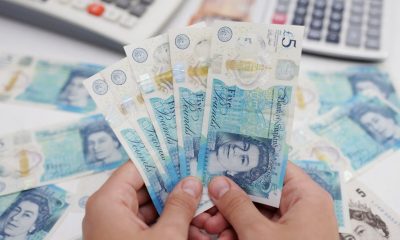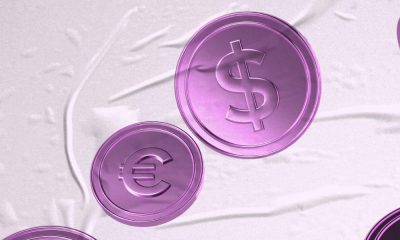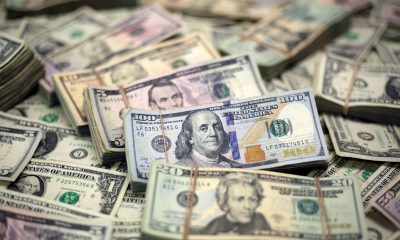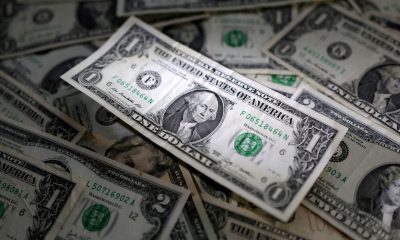Forex
Dollar slips after debt ceiling bill progresses; payrolls due later
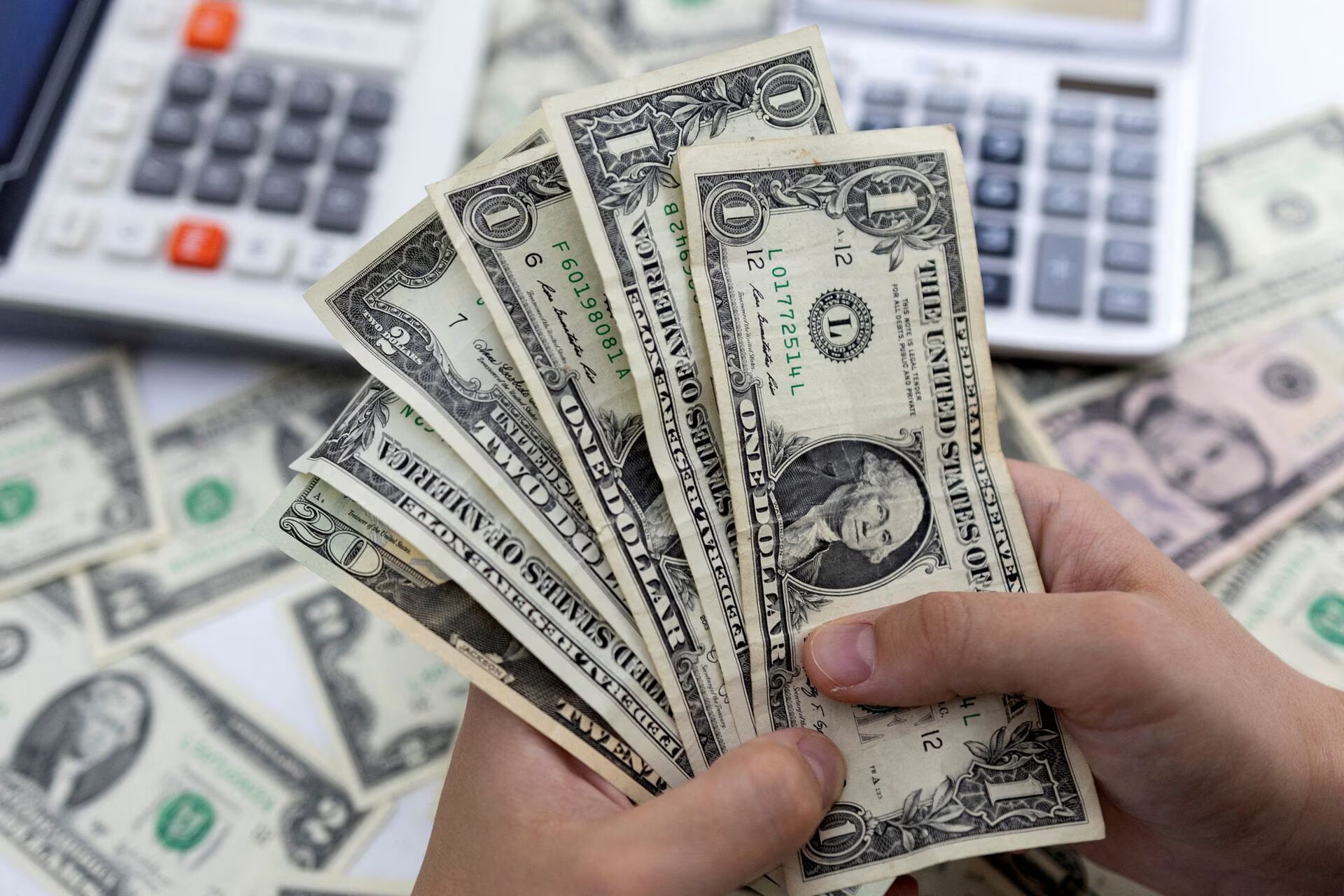
The U.S. dollar slipped lower in early European trade Friday, adding to the previous session’s sharp losses after the U.S. Congress approved the debt ceiling bill, while traders awaited the widely watched monthly payrolls release.
At 02:55 ET (06:55 GMT), the US Dollar Index, which tracks the greenback against a basket of six other currencies, traded 0.1% lower at 103.433, near a one-week low.
The index dropped 0.6% on Thursday, its worst day in almost a month, and is on course to fall 0.7% this week, which would be its worst week since mid-January.
The U.S. Senate late Thursday passed legislation lifting the government’s $31.4 trillion debt ceiling, a day after the House of Representatives had done the same.
The bill now heads to the White House for President Joe Biden to sign it into law, averting what would have been a first-ever default as the Treasury Department had warned it would be unable to pay all its bills on June 5 if Congress failed to act by then.
This news has hit the dollar, which had been a key beneficiary of the uncertainty because of its safe-haven status.
Attention now turns to the release later Friday of the official monthly U.S. jobs report, which is expected to show that the largest economy in the world added 180,000 jobs in May.
The jobs report will be one of the last pieces of data before the Fed’s June meeting and could help to determine whether the central bank agrees to pause its 14-month rate hiking campaign.
This likelihood appeared to grow over the last couple of days after both Philadelphia Fed President Patrick Harker and Fed Governor Philip Jefferson came out in favor of such a move.
Elsewhere, EUR/USD rose 0.1% to 1.0773, climbing to a one-week high after European Central Bank President Christine Lagarde pointed to further interest rate hikes even as the May eurozone inflation release came in weaker than expected on Thursday.
“Inflation is too high and it is set to remain so for too long,” Lagarde said on Thursday, in a speech in Germany.
Data released Friday showed that French industrial production rose 0.8% on the month in April, above the 0.3% growth expected.
This is a considerable improvement from the previous month’s 1.1% fall and points to resilience in the second largest economy in the eurozone, something the ECB will take into account.
GBP/USD rose 0.1% to 1.2544, USD/JPY rose 0.1% to 138.88, after dropping to as low as 138.44 on Thursday for the first time since May 24, while AUD/USD rose 0.6% to 0.6611.
The Australian dollar was boosted by the news that the country’s independent wage-setting body will raise the minimum wage by 5.75% from July 1, adding to inflation worries.
The Reserve Bank of Australia meets next week, and this has lifted expectations of a quarter-point rate hike.
Forex
Asia FX muted as dollar steadies ahead of inflation data; yen fragile
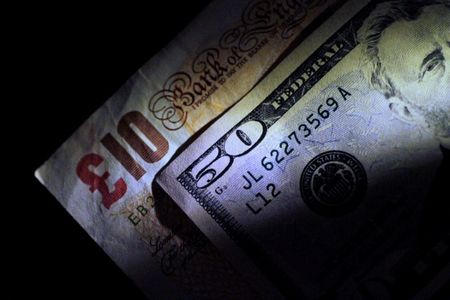
Investing.com– Most Asian currencies moved little on Tuesday, tracking a steady dollar as traders remained largely focused on upcoming U.S. inflation readings that are likely to factor into the outlook for interest rates.
The Japanese yen was also a point of focus, as sustained weakness in the currency put traders on guard over any more potential intervention by the government.
Most regional currencies were nursing recent losses against the dollar, as traders remained largely biased towards the greenback ahead of more cues on U.S. interest rates.
Japanese yen on intervention watch as USDJPY crosses 156
The yen’s pair, which is inversely representative of strength in the currency, rose 0.1% on Tuesday and was trading well above 156 yen.
The pair had recouped a bulk of its losses made earlier in May, when the government was seen intervening in currency markets on two separate occasions.
While traders now saw 160 yen as the new line in the sand for government intervention, USDJPY’s rapid ascent, despite the threat of intervention, sparked fears that the government may intervene sooner.
Japanese data showed factory inflation remained largely subdued in April, pointing to little inflationary pressure on the Bank of Japan to keep tightening policy.
Chinese yuan inches lower on property market jitters
The Chinese yuan’s pair rose 0.1%, as sentiment towards China soured after another major property developer- in this case Agile Group Holdings Ltd (HK:)- defaulted on its bond payments.
The default largely offset some optimism over improving inflation in China, as well as Beijing’s recent unveiling of plans for its massive, 1 trillion yuan ($138 billion) bond issuance.
remove ads
.
A prolonged slump in the property market has been a key point of pressure on the Chinese economy, despite repeated efforts from Beijing to support the sector. A slew of major Chinese cities had relaxed restrictions on home buying in the past two weeks.
Dollar steady with PPI, CPI data on tap
The and rose slightly in Asian trade, as traders remained biased to the greenback ahead of inflation readings in the coming days.
data is due later on Tuesday, while the more closely-watched reading is due later on Wednesday. Both readings are likely to factor into the outlook for U.S. interest rates, with any signs of sticky U.S. inflation presenting more headwinds for Asian currencies.
Most regional units were muted on Tuesday. The Australian dollar’s pair fell 0.1%, while the South Korean won’s and the Singapore dollar’s rose 0.2% and 0.1%, respectively.
The Indian rupee’s pair remained close to record highs as data on Monday showed Indian remained steady in April.
Forex
Dollar just lower; steadying after key inflation data
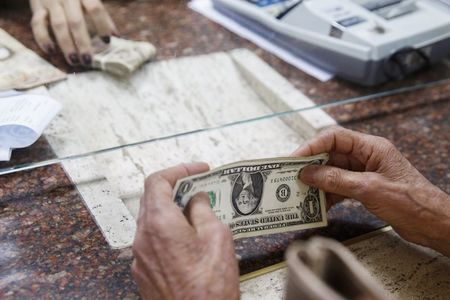
Investing.com – The U.S. dollar drifted marginally lower Monday, consolidating after recent swings as the focus turned squarely to upcoming U.S. inflation data for more cues on interest rates.
At 04:00 ET (09:00 GMT), the Dollar Index, which tracks the greenback against a basket of six other currencies, traded just 0.1% lower to 105.090, after a weekly gain last week after two successive weeks of decline.
Dollar awaits key inflation data
The dollar saw wild swings last week as mixed U.S. economic readings sparked questions over just when the central bank will begin cutting interest rates this year.
However, this volatility is likely to retreat at the start of this new week as traders await the release of the latest U.S. inflation data, which will likely dictate near-term sentiment regarding potential rate cuts.
Analysts expect Wednesday’s crucial report to show underlying inflation rising 3.6% on a year-over-year basis, which would be the smallest increase in over three years.
But a hotter-than-expected inflation reading would likely price out rate cuts for the rest of the year, likely boosting the greenback.
“After the dovish FOMC meeting and the soft April NFP sucked the momentum from the dollar’s upside, the question is whether price data can actively contribute to the dollar’s downside,” analysts at ING said, in a note.
Investors will get some fresh insights into the health of the U.S. consumer this week with April data on Wednesday, plus earnings results from major retailers Walmart (NYSE:) and Home Depot (NYSE:).
remove ads
.
Sterling benefits from strong growth data
In Europe, gained 0.1% to 1.2531, retaining some strength after data showed last week that Britain’s economy grew by the most in nearly three years in the first quarter of 2024.
“Sterling continues to witness a stop-start sell-off, where Friday’s release of a stronger-than-expected first quarter GDP figure for 2024 managed to give sterling some support,” ING added.
“We doubt this better-than-expected reading has too much impact on Bank of England thinking – beyond perhaps giving it some room for patience on policy. And we retain our downside bias for sterling over the coming quarters.”
traded 0.1% higher to 1.0784, although this firmer tone could be short-lived with the European Central Bank all but promising a rate cut on June 6.
Eurozone inflation remains on track to fall back to 2% next year, so policymakers will likely start cutting interest rates from a record high in June, the account of their April meeting showed on Friday.
Markets now see up to three rate cuts this year, or two beyond June, most likely in September and December, when the ECB also publishes new economic projections.
Yuan falls to two-year low
In Asia, rose 0.1% to 7.2339, hitting a two-week high after data released over the weekend offered mixed cues on Chinese inflation.
inflation rose more than expected in April, as persistent stimulus measures from Beijing helped buoy demand. But inflation shrank for a 19th consecutive month, as Chinese business activity remained laggard.
remove ads
.
Traders were also wary of China after reports last week said the Biden administration was preparing more trade tariffs against the country, especially on China’s electric vehicle sector. The move could reignite a trade war between the world’s largest economies.
rose 0.1% to 155.87, hovering just below the 156 level.
The focus remained on any more potential government intervention to support the currency, following at least two instances of intervention earlier in May. The government was seen stepping in to bring down the USD/JPY pair from 34-year highs above 160.
Forex
Dollar not receiving usually seasonal boost in May – UBS
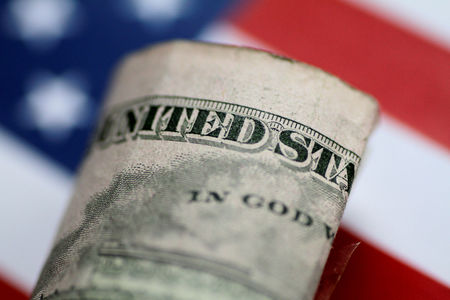
Investing.com – The U.S. dollar usually enjoys the month of May, according to analysis from UBS, but this year seems to be different.
“May has historically been a positive month for the dollar: our seasonality indicator suggests that the bid for USD usually picks up in late April and culminates around the middle of May, with EUR, AUD and NZD typically the most impacted,” analysts at the Swiss bank said, in a note dated May 13.
However, the dollar has seen little seasonal boost so far, UBS said, which intuitively aligns with a lack of ‘sell in May’ tendency in equities thus far.
While benign corporate earnings and a dovish FOMC shift have likely been the main explanation, we also observe that negative May equity returns have actually become less prevalent in the last 10 years, with only 2019 being negative.
“More specifically for FX, this is also an indication that the market might already be long USD for positive carry and as a defensive hedge,” UBS added. “This prevents the type of disruptive and USD-positive risk unwinds that may have taken place in past episodes, when the dollar was more of a risk funder.”

 Forex2 years ago
Forex2 years agoForex Today: the dollar is gaining strength amid gloomy sentiment at the start of the Fed’s week

 Forex2 years ago
Forex2 years agoHow is the Australian dollar doing today?

 Forex1 year ago
Forex1 year agoUnbiased review of Pocket Option broker

 Forex2 years ago
Forex2 years agoDollar to pound sterling exchange rate today: Pound plummeted to its lowest since 1985

 Cryptocurrency2 years ago
Cryptocurrency2 years agoWhat happened in the crypto market – current events today

 World2 years ago
World2 years agoWhy are modern video games an art form?

 Stock Markets2 years ago
Stock Markets2 years agoMorgan Stanley: bear market rally to continue

 Economy2 years ago
Economy2 years agoCrude oil tankers double in price due to EU anti-Russian sanctions



